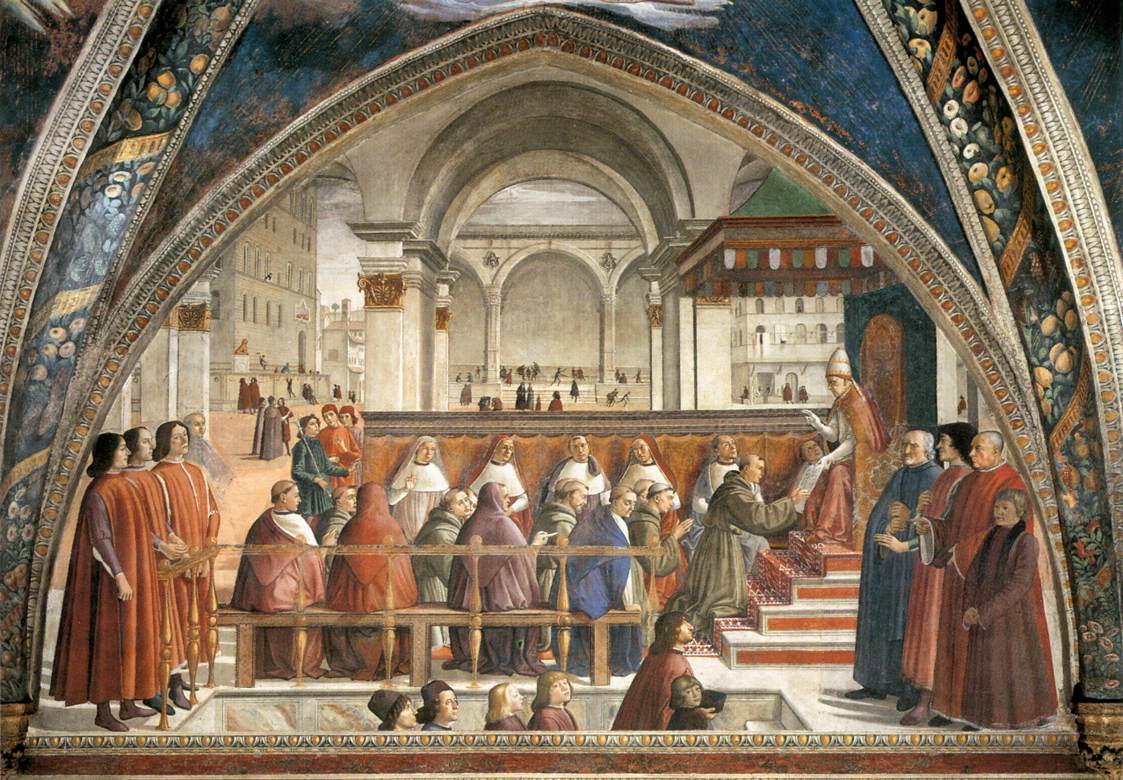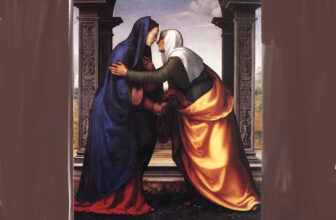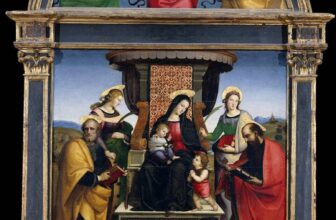
What Is Domenico Ghirlandaio Known For
In the vibrant tapestry of the Italian Renaissance, where artistry flourished under the patronage of powerful families and the watchful gaze of the Catholic Church, Domenico Ghirlandaio emerged as a master storyteller. Through paint and fresco, he chronicled the lives of saints and nobles, blending realism with idealism, spiritual grandeur with intimate detail. His works captured not just the biblical narratives but the cultural and social currents of 15th-century Florence. Best remembered as Michelangelo’s teacher, Ghirlandaio carved a legacy that continues to shine centuries later.
This is the story of Domenico Ghirlandaio, his life, his most iconic works, his influence on art history, and where his masterpieces can be found today.
Who Was Domenico Ghirlandaio?
Born Domenico di Tommaso Bigordi on June 2, 1448, in Florence, Italy, Ghirlandaio earned his nickname, meaning “garland maker,” from his father, who crafted gold and silver garlands for Florentine women. Originally apprenticed to his father, Ghirlandaio’s artistic destiny took a different turn when his talent for drawing led him to pursue painting.
Florence during the 15th century was the beating heart of the Renaissance, and Ghirlandaio quickly found his place among the city’s most esteemed painters. He was trained in the workshop of Alesso Baldovinetti, a painter known for his attention to landscape and perspective. Ghirlandaio absorbed his master’s lessons and evolved into a master of fresco, portraiture, and narrative scenes.
While Ghirlandaio painted with a clear eye for realism and detail, he also embraced the decorative elegance of the Florentine tradition. His art fused the sacred with the secular, often portraying biblical events in contemporary Renaissance settings, with patrons and Florentine citizens appearing alongside saints and apostles.
Ghirlandaio is best known for:
His Frescoes: Monumental fresco cycles in Florence and Rome that combine religious themes with Florentine daily life.
Narrative Clarity: His compositions are noted for their clarity, order, and richly detailed storytelling.
Realistic Portraiture: He included lifelike portraits of his patrons within religious scenes, an innovation that influenced future Renaissance painters.
Mentorship of Michelangelo: Ghirlandaio was the first master of Michelangelo Buonarroti, the towering genius of the High Renaissance.
Bridging Gothic and Renaissance: His works marked a transition from the Gothic style to the more naturalistic and human-centered art of the Renaissance.
Domenico Ghirlandaio Most Famous Paintings
While Ghirlandaio created many works throughout his career, several stand out for their artistic mastery, historical significance, and enduring beauty.
1. Fresco Cycle in the Tornabuoni Chapel (1485–1490) – Santa Maria Novella, Florence
Arguably Ghirlandaio’s magnum opus, the frescoes in the Tornabuoni Chapel narrate the lives of the Virgin Mary and St. John the Baptist. These frescoes cover the chapel walls and ceilings with vivid storytelling, Renaissance architecture, and portraits of Florentine nobility.
Highlights include:
The Birth of the Virgin
The Visitation
Zacharias Writing the Name of John
The Birth of John the Baptist
Ghirlandaio painted Florentine merchants, noblewomen, and children with astonishing detail, often including contemporaries like the Tornabuoni family. These frescoes are considered a visual document of Florentine life in the late 15th century.
2. Last Supper (1480) – Convent of San Marco, Florence
This serene and symmetrical Last Supper reflects Ghirlandaio’s skill in composition. Unlike Leonardo da Vinci’s emotionally charged version, Ghirlandaio’s interpretation is calm, formal, and deeply reverent. The balance of figures, use of architectural perspective, and soft lighting make it one of his most contemplative works.
3. Adoration of the Magi (1487) – Ospedale degli Innocenti, Florence
Commissioned for the orphanage of Florence, this panel showcases Ghirlandaio’s decorative style. The lavish costumes, architecture, and the inclusion of angels and animals enhance the grandeur of the biblical narrative.
4. The Calling of the First Apostles (1481) – Sistine Chapel, Vatican City
Invited by Pope Sixtus IV to work on the newly constructed Sistine Chapel, Ghirlandaio contributed to the fresco cycle on the life of Christ and Moses. His fresco, The Calling of the First Apostles, illustrates Christ summoning Peter and Andrew and reveals Ghirlandaio’s mature Roman style with majestic figures and spatial clarity.
5. Portrait of an Old Man and His Grandson (c. 1490) – Louvre Museum, Paris
This touching double portrait is one of Ghirlandaio’s most personal and intimate works. The old man, possibly suffering from rhinophyma, looks tenderly at the child. The emotional connection between the figures, set against a detailed landscape, makes this one of the earliest examples of psychological portraiture in the Renaissance.
What Is the Most Expensive Painting by Domenico Ghirlandaio?
While Renaissance paintings rarely appear in modern auctions due to their presence in museum collections, Ghirlandaio’s “Portrait of a Lady” (sometimes attributed to his workshop) fetched significant attention at Sotheby’s in recent decades.
However, the most valuable works by Ghirlandaio are not sold but rather priceless due to their cultural significance. The Tornabuoni Chapel frescoes, given their scale and integration into architecture, are essentially invaluable.
The Louvre’s “Portrait of an Old Man and His Grandson” is widely considered one of his most valuable standalone panel paintings. Though never auctioned, its worth is estimated in the tens of millions of dollars given its rarity and emotional depth.
How Many Paintings Did Domenico Ghirlandaio Create?
There is no precise count, but historians estimate that Ghirlandaio and his workshop created:
Over 100 individual panel paintings and portraits
At least a dozen major fresco cycles
Numerous drawings, preparatory sketches, and altar pieces
Ghirlandaio ran a large workshop that included his brothers Davide and Benedetto, and later his son Ridolfo Ghirlandaio. This studio system allowed him to take on large commissions and maintain high output.
It is believed that about 60–80 works directly bear his hand, while many more were executed by assistants under his design and supervision.
Where Can You Find Domenico Ghirlandaio’s Paintings Today?
Ghirlandaio’s masterpieces are scattered across Italy and Europe, primarily in churches and prominent museums. Some of the key locations include:
Italy
Florence
Santa Maria Novella (Tornabuoni Chapel frescoes)
Convent of San Marco (Last Supper)
Ospedale degli Innocenti
Palazzo Vecchio
Museo del Bigallo
Rome
Sistine Chapel (Vatican City)
Santa Maria Maggiore
Pisa
Campo Santo (workshop frescoes)
International
Louvre Museum, Paris (Portrait of an Old Man and His Grandson)
National Gallery, London
Metropolitan Museum of Art, New York
Gemäldegalerie, Berlin
Städel Museum, Frankfurt
Many of his works are still in their original locations, especially frescoes which cannot be moved. These offer an authentic glimpse into how Renaissance art was experienced in situ.
Domenico Ghirlandaio’s Legacy
Ghirlandaio died in 1494, at the age of 46, but his influence endured long after his death. His legacy is multifaceted:
1. Michelangelo’s Teacher
Perhaps his most lasting contribution to art history is his mentorship of Michelangelo Buonarroti. According to Giorgio Vasari, Michelangelo was apprenticed to Ghirlandaio at age 13. While Michelangelo would go on to revolutionize Renaissance art, Ghirlandaio’s influence is evident in his early works, particularly in fresco composition and human anatomy.
2. Elevating the Fresco
Ghirlandaio’s frescoes helped cement this medium as the pinnacle of public art in Renaissance Italy. His narrative clarity and mastery of perspective influenced contemporaries like Botticelli, Perugino, and Filippino Lippi.
3. Documenting Renaissance Florence
More than just religious stories, Ghirlandaio’s paintings serve as visual archives of 15th-century Florence, its architecture, fashion, social dynamics, and spiritual life.
4. Humanizing the Divine
By integrating contemporary portraits and real settings into biblical scenes, Ghirlandaio made sacred stories more relatable. His art bridged the divine and the everyday, a hallmark of the humanist ideals of the Renaissance.
5. A Family of Artists
Ghirlandaio founded a dynasty of artists. His brothers and son continued the family workshop, and his influence was felt across generations of Florentine painters.
Domenico Ghirlandaio may not have achieved the towering fame of Michelangelo or Leonardo da Vinci, but his art represents the soul of the Early Renaissance. Through his exquisite frescoes, tender portraits, and vibrant storytelling, he captured the beauty of his world, both sacred and secular.
His work endures not only on the walls of chapels and the halls of museums but in the fabric of art history itself. Ghirlandaio was a master of vision and discipline, blending faith with realism, mythology with memory. For anyone seeking to understand the Renaissance not just as a movement but as a moment of profound human expression, Ghirlandaio remains a crucial, captivating figure.




